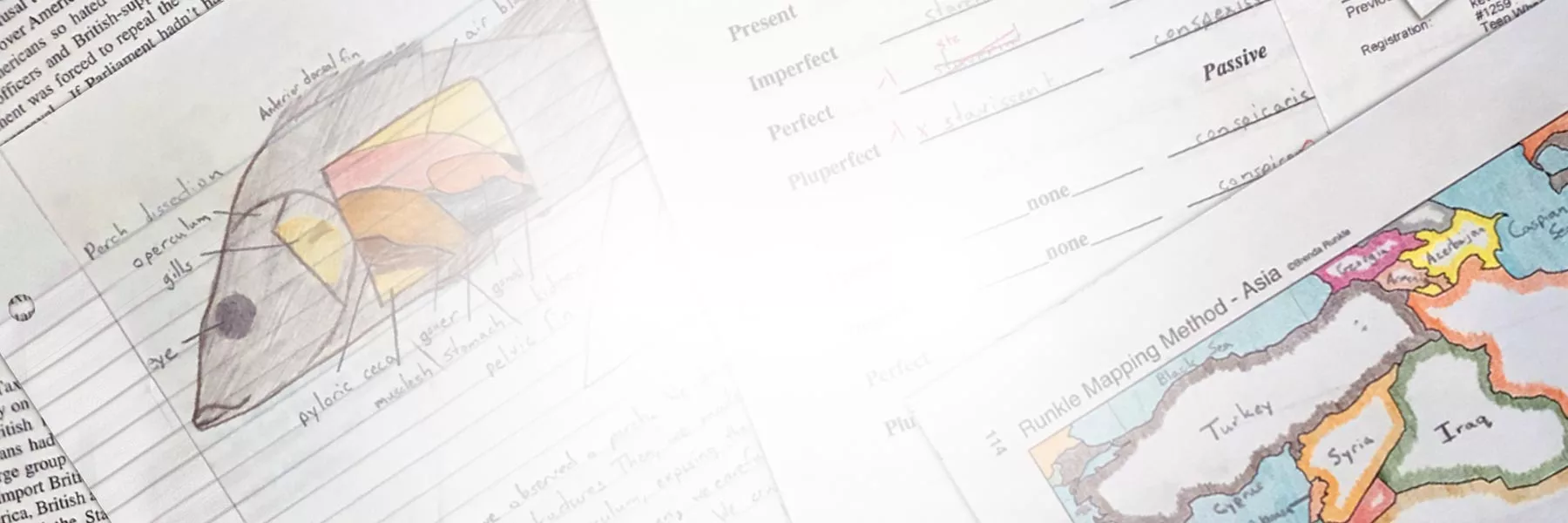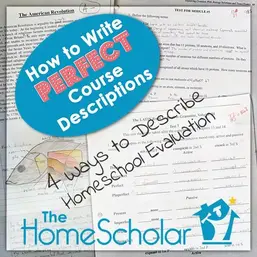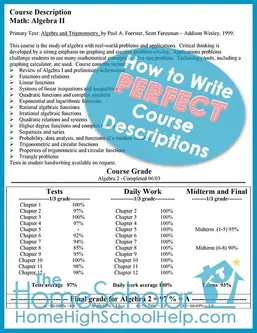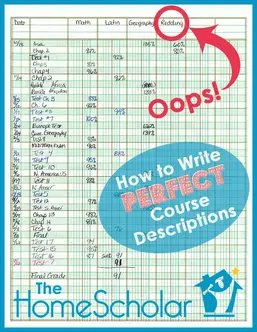Homeschool Course Descriptions - in a Nutshell
Why Colleges Want Homeschool Course Descriptions
Ingredients of Perfect Homeschool Course Descriptions
3 Writing Prompts for Homeschool Course Descriptions
4 Ways to Document Homeschool Grades
6 Tips for Homeschool Course Descriptions
Perfect Homeschool Record Keeping Not Required
Homeschool Course Descriptions Earn College Scholarships
"During the first webinar of yours that I ever joined when my daughter was a freshman, I learned that your sons received full tuition scholarships to their top choice university. I asked myself "Could this seriously become a reality for us?" In the fervent hopes that it could, I devoted months of my time to capturing our daughter's amazing high school education. I closely followed your advice from webinars, the Total Transcript [Solution] and Comprehensive Record Solution, and e-books on how to how to best piece her educational picture together. It paid off! Our daughter just learned that she was awarded a full tuition scholarship to her top choice university, too! A thousand thanks to you and the help that you so graciously provide!" ~ Kristen (Minnesotan mom living overseas)
"My daughter was offered a total of $232,000 in scholarships at this time. We followed all of your tips about course descriptions. Rachel has done a lot of independent learning and had many different interests. That was reflected in her transcripts. I will say the colleges loved the course descriptions. I had someone tell me the colleges did not want all that information but it made a difference for her." ~ Sharon in Texas
The National Association for College Admission Counseling (NACAC) emphasizes the importance of taking challenging classes. “Year to year, we find that getting good grades in challenging courses is what college admission offices value most when reviewing applications from first-time freshmen,” said Joyce E. Smith, NACAC’s chief executive officer. “Performance in core classes is especially significant, with 79.2 percent of institutions attributing ‘considerable importance’ to grades in college-prep courses.”
Recommended Homeschooling Resources

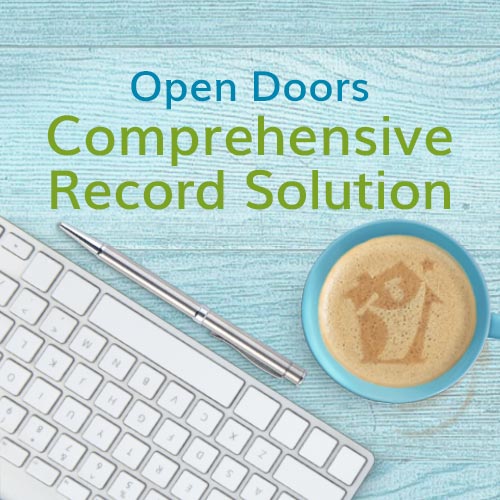
Lee Binz, a veteran homeschool mom and best-selling author will come alongside with the tools, training, homeschool transcript and course description templates, and personal support you need to create professional homeschool records that will amaze and impress colleges. Your purchase comes with lifetime access and a review of four of your course descriptions by Lee.

 Login
Login